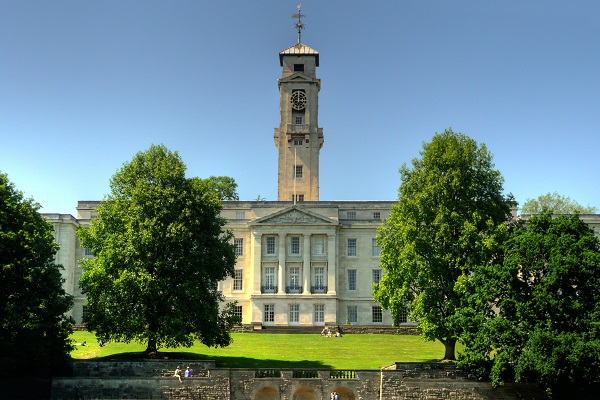University of Nottingham: Research finds new patterns of plant diversity, transforming our understanding of how to conserve it
A new study has, for the first time, produced global maps of local plant biodiversity, based on field surveys around the world.
The main difference from previous global maps is that the new ones are based on species living together in communities (‘local’), rather than on amalgamating maps of known ranges of species – for example, your local park may be within the range of 500 or more plant species, but only a few dozen will actually be there.
The study found that the global patterns of local plant biodiversity substantially change depending on the size of the sampling sites – which ranged from a few square metres to hectares. The study’s authors say this research will improve predictions of global environmental change effects on biodiversity.
An international team of experts, including academics at the University of Nottingham, was led by the Martin Luther University Halle-Wittenberg (MLU) and the German Centre for Integrative Biodiversity Research (iDiv) Halle-Jena-Leipzig. Their research has been published, open access, in the journal “Nature Communications”.
Professor Helge Bruelheide, at the MLU, said: “Most studies on global biodiversity are conducted on a relatively large scale, for example at a state or provincial scale. We wanted to find out how much results differ when smaller areas are examined.”
During the study, the team analysed a dataset of around 170,000 vegetation plots from all of Earth’s climate zones. The data included information on all of the plant species found at a location and the coordinates of the respective area under study. The data were taken from the globally unique vegetation database “sPlot”.
Dr Richard Field and Dr Franziska Schrodt, both from the School of Geography at the University of Nottingham, are founding members of the sPlot Consortium, which developed the sPlot database, and worked closely with the lead author on this new analysis.
The team used artificial intelligence to investigate, among other things, the relationships between the maps of plant biodiversity and the sizes of the sites surveyed in the field (constituting the pixels on the maps).
Their findings show that there are regions on Earth where focusing on large study areas only provides a limited understanding of the distribution of biodiversity: sometimes small areas can have a relatively high biodiversity, for example in the steppes of Eastern Europe, in Siberia and in the Alpine countries of Europe. At fine spatial scales, the large difference in biodiversity between the tropics, like the Amazon, and the temperate climate zones nearly disappears.
The authors found that the same applies to the African tropics, which were previously considered an exception in the tropical plant world.
Dr Francesco Sabatini, who led the study at MLU and is now an assistant professor at the University of Bologna, said: “The tropics have always been among the most biodiverse areas in the world. We wondered why this shouldn’t also apply to Western Africa. In fact, the distribution of plant species varies greatly in the African tropics. These species are distributed over very large distances, so that they are not always recorded when a small sampling area is examined.
“To correctly recognize the high biodiversity in Western Africa, many small areas are required.”
Dr Richard Field, Associate Professor of Biogeography at the University of Nottingham said: “Something that geographers bring to the study of biodiversity is a focus on spatial scale. Spatial scale has several aspects, including the scale at which data are measured or analysed, as well as the total size of the area studied.”
Dr Richard Field resize
What is unique about this study is that patterns of ‘local’ plant biodiversity – measured using vegetation plots in the field – are studied globally. This was not possible before we put together the sPlot database.
Dr Richard Field, Associate Professor of Biogeography at the University of Nottingham
Dr Franziska Schrodt, Associate Professor of Earth System Science at the University of Nottingham said: “We were not sure what the data would show. We have long known that tropical regions have more species than other parts of the world, but theoretical expectations were contradictory about global patterns of the diversity of species coexisting locally in small field plots.”
Franziska Schrodt
This matters because most biodiversity conservation is done in local areas, and we need better understanding at this scale to better plan our conservation activities.
Dr Franziska Schrodt, Associate Professor of Earth System Science at the University of Nottingham
The study analysed forests and non-forest areas separately because larger field plots are needed for trees than for herbs. For each, the researchers analysed the data at three standardised plot sizes, ranging from 20m x 20m to 1 hectare plots for forests, and from 3m x 3m to 30m x 30m plots for herbs. As the plot size increased, so the patterns became more similar to the ones known for larger regions.
This approach allowed the researchers to calculate plant biodiversity ‘scaling anomalies’, and map them globally. These anomalies are places that have unusually high or low plant diversity in the smallest plots relative to the largest ones.
The scaling anomalies are perhaps the most interesting features of our results. Not only do we find that at some scales parts of the Arctic are as diverse as parts of the Amazon, but we also begin to get a clearer picture of how that diversity is pieced together in landscapes and regions. In some places you find lots of species in a small site but don’t find many more across the whole landscape, while in other places you find few species in any one site, but a lot of changes in species between sites. This sort of information is key for designing conservation strategies.
Dr Richard Field

